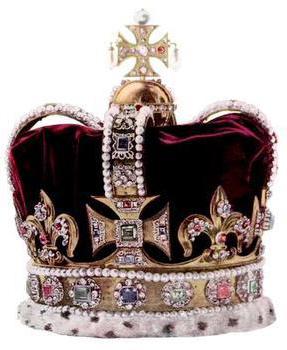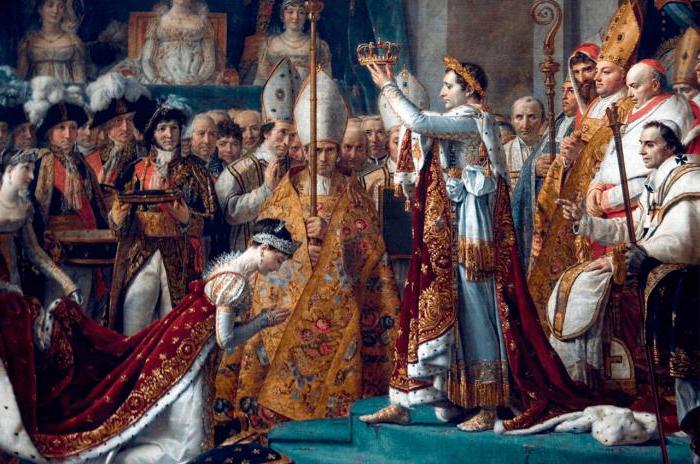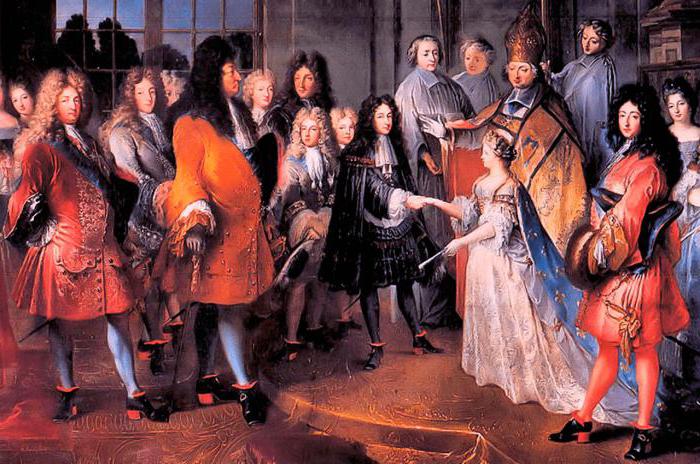Throughout the history of monarchical power, there were several types and variations. It all depended on how strong the power of the ruler was in each of them. Separate on this list is the absolute monarchy, which originated in the 16th century and had both positive aspects (for example, the unification of lands into a centralized state) and negative ones - this is the unlimited power of the autocrat.

The concept and essence of the monarchy
The first rudiments of the monarchy relate to the period of the emergence of the states of the Ancient East - in Mesopotamia, Egypt, India and China. The dominion of the ruler was unlimited, in his hands all the fullness of power was concentrated. The ruler was the chief judge in the state, he was the commander-in-chief of the troops and, most importantly, he was declared the son of a god, most often the Sun. Such form of government called despotism. The absolute monarchy has a number of characteristics coinciding with it.

In the Middle Ages, with the birth and development of feudal relations, the power of landowners strengthened, and the power of the ruler, on the contrary, was somewhat infringed. This situation in Europe persisted until the XVII century. Absolutely representative monarchy limited the actions of the ruler.
Preconditions for the emergence of autocracy
The absolute monarchy did not appear from scratch, and this had its own reasons. In the developed Middle Ages in Europe there were no states with strong power of a single ruler. At that time - in the XIV-XV centuries., There was a reign of feudal lords and the church. In the cradle of absolutism in France, less than half of the state’s lands were in the power of the king, and they were called in one word - the domain. In some cases, the feudal lords could even force the monarch to sign a particular law. As for the power of the church - it was limitless, and the king would not dare to conflict with her.
However, it must be said that the developed Middle Ages is the time of the emergence of the bourgeoisie, for the successful operation of which the order and strong power of the center were simply necessary.

As a result, the order of things was established in which the old aristocracy wanted to leave everything as before, without losing their power and not giving dominion to the king. The new layers of the bourgeoisie would feel much more confident with the absolute power of the monarch. The church was also on the side of the latter, since it assumed that it and the state apparatus would be intertwined into a single whole, which would further strengthen the position of the first person in society. The absolute monarchy in France represented just such a symbiosis.
The emergence of an absolute monarchy
Before the era of absolutism, a class-representative monarchy existed. State bodies with this type of power: in France - the General States, in England - the Parliament, in Spain - Cortes, etc.
The cradle of the absolute monarchy was the French kingdom. It was there that in the 16th century the king became an unlimited ruler. All lands became state, and the power of Paris - unquestioned. The kings to the throne began to be crowned precisely by the Pope, which meant the chosenness of the monarch. And in the Middle Ages, religion was an integral part of the life of any citizen. Thus, subjects considered the king to be anointed of God.

During the period of absolute monarchy in France, the church merged with the state. From now on, high representatives of the clergy could get high posts. And large feudal lords and other wealthy sections of the population gave their children to study mainly in theological educational institutions, becauseunderstood that it was through the church that they could build a career for themselves. The most famous churchman and at the same time a statesman of the era of absolutism was Richelieu, who held more than 30 posts in the French kingdom at the same time, and was not inferior to the king in influence.
Distinctive features of an absolute monarchy
Most of all, absolutism arose in France. This happened during the change of eras: the new industrial bourgeoisie was building up its positions in society and the state, thus crowding out the old landowning aristocracy. The king at that time was not at a loss and, in the wake of the confrontation between the two predominant classes, increased his influence. From that moment on, the legislative, fiscal and judicial branches of government were in the hands of one person - the monarch. To maintain his status, the king needed strength - a regular army was created, completely subordinate directly to the king.
If before the monarchy was a noble family, that is, the landowning aristocracy was the support, then with the advent of absolutism, the king "stands on two legs": the feudal class joins the bourgeoisie class, which includes workers in trade and industry. The current status quo was adopted by the absolute monarchy, the age of which came in the 17th century and was called the era of “classical absolutism”.

According to the Leviathan principle, absolutism was characterized by the following words: power in the interests of a certain class is delegated to the state (in the person of the monarch), and it remains for all subjects to submit.
Government Office
The absolute monarchy has become the point from which the growth of the administrative apparatus began - the bureaucratization of the state. Before the era of absolutism, most of the land was distributed to the feudal lords, and they were managed by the landowners themselves. The king could only collect taxes.
When all power was concentrated in the hands of the monarch, the need arose for a clear management organization throughout the country. That is why the bureau began to appear with a huge number of new posts. An important role was played by secretaries of all ranks. Cities have lost self-government. Previously elected mayors have been appointed. The king, at his discretion, granted the title of ruler of the city to any rich person, since most often the choice of monarch depended on the substantial amount that the applicant for the mayor offered him. Only the village was granted self-government, which also did not exist for long.

The emergence of autocracy in Russia
Russia took a slightly different path to the development of the political system, but this did not prevent it from moving to absolutism at about the same time as in Europe. In the XVI century, Ivan IV was in power in Moscow, who was given the nickname "Terrible". It was he who became the founder in Russia of the absolute monarchy and the first Russian tsar. The power of Ivan IV was unlimited. In his activities, he relied only on himself and his loyal people. Under him, the state strengthened, borders expanded, and the development of the economy and financial system began.

Peter I became the successor of strengthening the Tsar’s sole power. During the reign of Peter the absolute monarchy in Russia acquired a final, formed appearance, and it was destined to exist almost unchanged for 200 years, until the fall of the autocracy in 1917.
Features of absolutism in Russia
Under the reign of Tsar Ivan IV, an elected Council is created. It included representatives of all classes, close to the king. After this, the Zemsky Cathedral is created. The purpose of these actions was to weaken the role of the old aristocracy, which was an obstacle to the formation of absolutism. New laws were created, the Streltsy army, a tax system was introduced.
Whereas in the West absolutism arose as a result of the contradictions of the old and new orders, in Russia the reason was the need for unification to protect against external threats.Therefore, the power was despotic, putting the kings on a par with the rulers of the first civilizations of Egypt and Mesopotamia.
Absolute monarchies in the modern world
At the beginning of 2016, the absolute monarchies in the world are: Vatican in Europe; Swaziland - in Africa; Qatar, Oman, Brunei, Saudi Arabia - in Asia. At the head of these countries are rulers with different titles, but all of them are united by the unlimited power.

Thus, the absolute monarchy, which originated in the XVI century as a necessity for ensuring economic progress or protection from external factors, has come a long way and today it takes place in 6 countries of the world.








